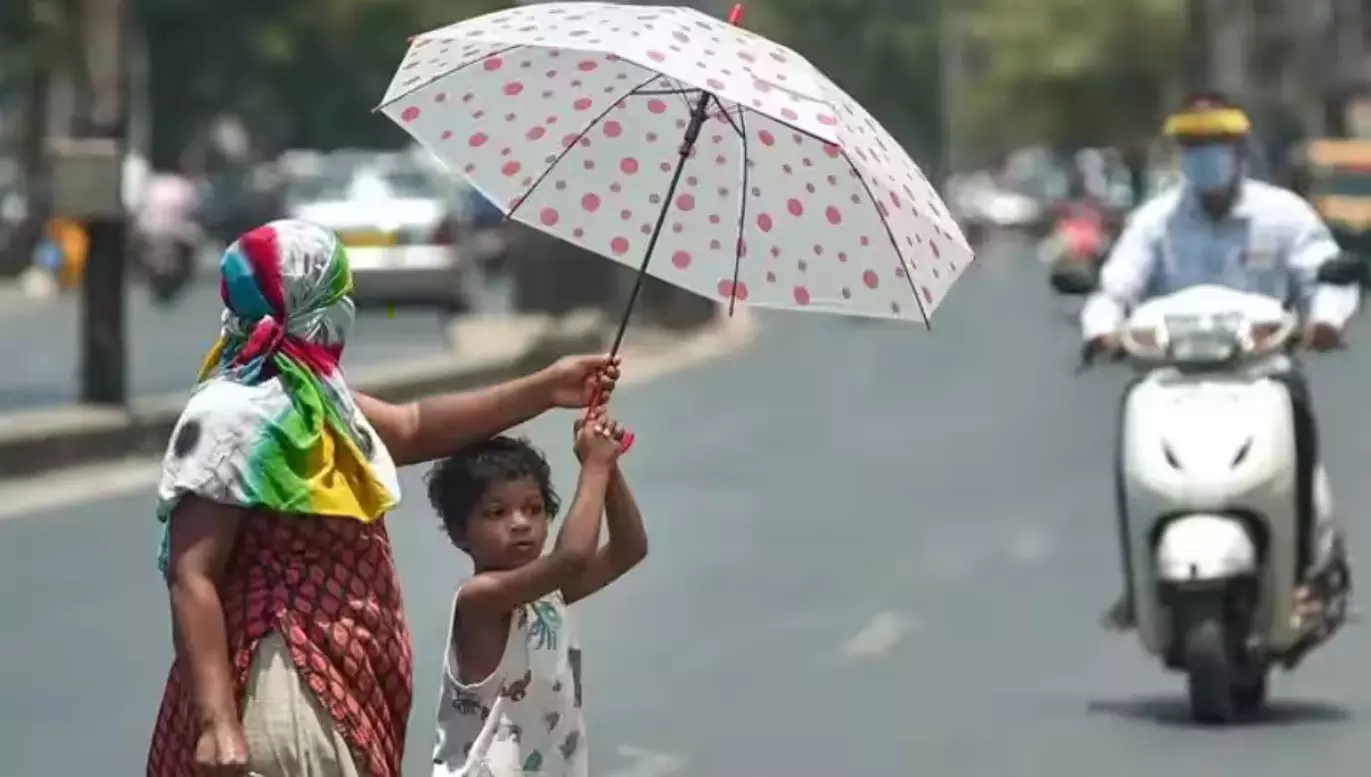Scorching heat

Parts of northern and central India are sweltering under harsh heatwave—presenting severe environmental and public health crisis. Over 37 cities have experienced temperatures exceeding 45 degrees Celsius, with at least three reported deaths due to heat-related illnesses. Shockingly, the Mungeshpur weather station in Delhi reported a staggering 52.3 degrees Celsius. The recording, however, was suspected by officials, and IMD dispatched a team to verify it. Irrespective of the authenticity of the recording, the severity of the situation in the national capital is still corroborated by the temperature readings ranging from 45.2 degrees Celsius and 49.1 degrees Celsius at other stations. Cloudy weather and partial showers have provided some respite to Delhiites, but the risk of extreme heatwave conditions continues to linger. Residents have been grappling with unbearable conditions, finding it difficult to eat, work, or even step outside. The city's power demand has surged significantly as air conditioning and cooling devices become essential. Additionally, the problem of water shortage has come to pester the residents of NCR and other regions of the country. Delhi's authorities have responded by imposing fines for water wastage, and deploying teams to curb unnecessary water use.
At the centre of these interrelated summer woes is the broader issue of climate change. Climate scientists have long warned that global warming increases the frequency and intensity of extreme weather events. In metropolitan cities like Delhi, factors including construction, traffic, and lack of green spaces exacerbate the heat, creating urban heat islands that further elevate temperatures. Apart from the national capital and adjoining regions, in Rajasthan, cities like Churu and Sirsa have recorded temperatures over 50 degrees Celsius, and Jaipur reported three deaths due to heatstroke. In Bihar, over 50 students fainted from dehydration, prompting urgent medical interventions and public protests against delayed emergency responses. India is already reported to have recorded 60 heat-related deaths since March 1, with over 16,000 cases of heatstroke recorded during the same timeframe. The figures around heatwave-related deaths are highly inconsistent, and may be a gross underestimation. Over the past decades, various agencies have reported different numbers. Additionally, many deaths that are caused by exhaustion are not counted as heatstroke casualties, while in essence, they are a fallout of heatwaves.
Apart from casualties, heatwaves also lead to a range of physical and mental health issues. Needless to say that these conditions have a differential impact on different segments of society. People from low- and mid-income groups — who constitute a major part of the Indian population — not only lack high-end cooling facilities, but are also engaged in outdoor works, mostly. Labourer and peasant class face the direct brunt of heatwaves. Additionally, the living conditions of migrant workers, often living at the periphery of metropolitan cities, is vulnerable to heat and humidity — a disastrous combination. Furthermore, the high amount of CFCs emitted from air conditioners, refrigerators and other sources in affluent areas come to haunt them in greater degree — further highlighting the inequitable and disproportionate impact of climate conditions like heatwave. Why formulating policies, policymakers should focus extensively on these vulnerable groups.
The remedies of excessive heatwave conditions are not very elaborate, but are hardly adhered to, probably because of lack of awareness regarding the severity of heatwaves. Immediate steps must include enhancing urban planning to incorporate more green spaces, improving water management systems, and ensuring robust healthcare infrastructure to handle heat-related illnesses. Long-term strategies must focus on reducing greenhouse gas emissions, transitioning to renewable energy sources, and promoting sustainable agricultural practices. Moreover, public awareness campaigns are crucial to educate citizens on heatwave preparedness and the importance of hydration and heatstroke prevention. Protective measures, such as providing shaded areas and water at bus stops and ensuring that construction workers have adequate breaks, are essential to safeguard vulnerable populations. From policy changes to individual behaviours, every effort counts. The time to act is now.



